
Milam County is a county located in the U.S. state of Texas. As of the 2020 census, its population was 24,754. The county seat is Cameron. The county was created in 1834 as a municipality in Mexico and organized as a county in 1837. Milam County is named for Benjamin Rush Milam, an early settler and a soldier in the Texas Revolution.

Rosebud is a city in Gasconade County, Missouri, United States. The population was 390 at the 2020 census.
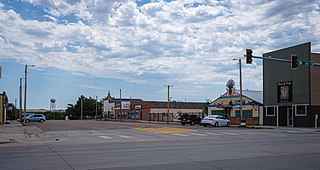
Mission is a city on the Rosebud Indian Reservation in northern Todd County, South Dakota, United States. The population was 1,156 at the 2020 census.

Jourdanton is a city in and the county seat of Atascosa County, Texas, United States. The population is 4,094. It is part of the San Antonio metropolitan statistical area. The mayor is Robert "Doc" Williams. The city manager is Bobby J. Martinez. The police chief is Eric Kaiser. The fire chief is Jay Fojtik.

Meridian is a city and the county seat of Bosque County in central Texas, United States. It is forty-seven miles northwest of Waco. The population was 1,493 at the 2010 census.

Bayview is a town in Cameron County, Texas, United States. The population was 383 at the 2010 census. It is part of the Brownsville–Harlingen–Raymondville and the Matamoros–Brownsville metropolitan areas.

Palm Valley is a city in Cameron County, Texas, United States. The population was 1,304 at the 2010 census. It is part of the Brownsville–Harlingen–Raymondville and the Matamoros–Brownsville metropolitan areas.
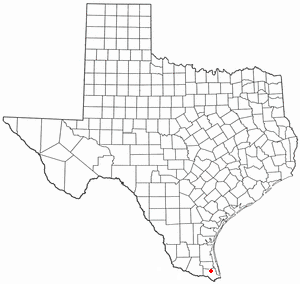
Rio Hondo is a city in Cameron County, Texas, United States. The population was 2,356 at the 2010 census. It may be included as part of the Brownsville–Harlingen–Raymondville and the Matamoros–Brownsville metropolitan areas.
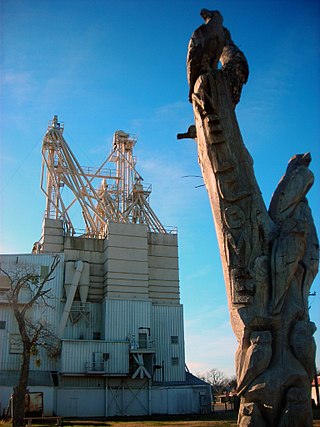
Muenster is a city in western Cooke County, Texas, United States, along U.S. Route 82. The population was 1,544 at the 2010 census. Muenster is a primarily German-Texan and Catholic city.
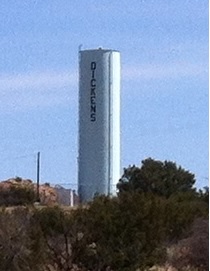
Dickens is a city in and the county seat of Dickens County, Texas, United States. The population was 286 at the 2010 census, down from 332 at the 2000 census.

Rosebud is a city in Falls County, Texas, United States. Its population was 1,296 at the 2020 census.

Edcouch is a city in Hidalgo County, Texas, United States. The population was 3,161 at the 2010 census. It is part of the McAllen–Edinburg–Mission and Reynosa–McAllen metropolitan areas. The town was founded in 1927 and named for Edward Couch, landowner and banker.
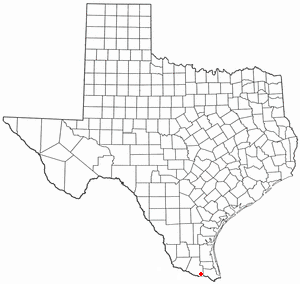
Progreso is a city in Hidalgo County, Texas. The population was 5,507 at the time of the 2010 United States Census. It is part of the McAllen–Edinburg–Mission and Reynosa–McAllen metropolitan areas.

Progreso Lakes is a city in Hidalgo County, Texas. The population was 240 at the 2010 United States Census. The city, incorporated in 1979, is centered on Lion and Moon Lakes, two resacas or ox-bow lakes.

Stanton is a city in and the county seat of Martin County, Texas, United States. Stanton was founded as Marienfeld by German immigrants that were some of the first settlers in this region of Texas. The population was 2,492 at the 2010 census.

Gregory is a city in San Patricio County, Texas, United States. The population was 1,907 at the 2010 census.

Taft is a city in San Patricio County, Texas, United States. The population was 3,048 at the 2010 census.

Benbrook is a town located in the southwestern corner of Tarrant County, Texas, and a suburb of Fort Worth. As of the 2010 United States census, the population was 21,234, reflecting an increase of 1,026 from the 20,208 counted in the 2000 census, which had in turn increased by 644 from the 19,564 counted in the 1990 census.

Niederwald is a city in Caldwell and Hays counties in the U.S. state of Texas. The population was 565 at the 2010 census. Niederwald means "low forest", or "low wood", in German. It was named Niederwald by the German founders of the town. This region of Central Texas was settled in the 1800s primarily by Germans and European emigrants and is referred to as the Texas-German belt by locals.

Reno is a city located in Parker County, Texas, United States. As of the 2010 census, the city had a total population of 2,494.



















